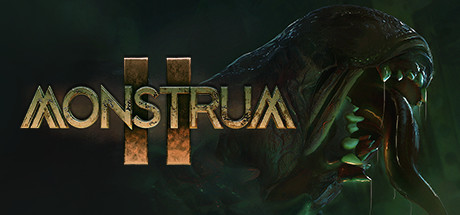
For Internal Use Only
Prepared by: Su Min Choi | 3rd October 2024
1 BIOLOGY
The Brute was developed by exposing an initial human subject to intense amounts of radiation followed by deep-sea pressure conditioning. The result of hundreds of iterations is a mutated organism that weighs more than 300 kg and maintains a core temperature of over 4000 K.
The average Brute specimen is best considered a sturdy, resistant exoskeleton housing an ongoing fusion reaction, rather than any kind of organic physiological function. No higher brain functions remain beyond a primal desire to hunt down prey and destroy anything in its path.
It has one ‘humanoid’ upper limb for basic motor function; the other is a malformed, overgrown tumour with higher bone density that the Brute uses to catch and crush its prey. Its two legs allow for basic locomotion, but the Brute tends to rely on inertia to maintain its speed more than agility.
Its sensory suite is basic – as far as we know, the specimen is unable to smell, and its eyesight is limited at best. For hunting, it relies primarily on its advanced hearing and the ability to distinguish the organic from the inanimate with its echolocating roar.
2 CAPABILITIES
For ease of examination and testing, our lab and field teams have classified the capabilities of the Sparrowlock specimens into four broad categories: offensive, sensory, locomotive, and specific.
2.1 OFFENSIVE
The Brute is the strongest of the three bioweapons currently in development in the Sparrowlock labs. It outclasses the other two in sheer brute force, and once it catches up with its victim, the encounters are most often swift and fatal.
Though its basic reach can appear limited in conjunction with its lumbering movement, the Brute can quickly close distance by charging towards its target, knocking it over with its incredible momentum. After that, clean-up is often a matter of course.
Again harnessing its great weight, the Brute can also jump in place, sending out a stunning shockwave upon landing. This tremor can destroy fragile matter and throw objects and people about.
2.2 SENSORY
With its other senses being poor or absent entirely, the Brute relies primarily on sound to track its prey. Its roar is a deep reverberation that easily carries across a great distance, penetrating even external walls and metal bulkheads. The Brute can distinguish between inanimate objects and organic beings depending on the sound wave that bounces back from its roar.
The echolocation becomes unreliable when there are several layers of solid matter between the Brute and its prey, however, often preventing the specimen from tracking the organic beings effectively.
2.3 LOCOMOTIVE
The Brute often uses its incredible momentum to propel itself in a straight line after its prey. This charge can leave it momentarily exhausted, but the tradeoff is incredible - anything that stands in its path gets thrown aside like bowling pins, destroying fragile objects and causing massive internal injuries to anything organic.
2.4 SPECIFIC
When hunting its prey, the Brute seems to enter something akin to a predator’s bloodlust. Though similar behaviour is present in the other two bioweapon specimens as well, the pattern triggers much earlier in the Brute and leads to far more vicious results.
3 ADVANCED BEHAVIOURS
The Brute specimens that we have had in field testing for months have all developed some or all of the advanced hunting tactics described below, far outclassing the lab-bound variants in skill and rate of lethal encounters.
3.1 REFINED CHASE TACTICS
- Experienced Brute specimens seem to be more aware of the limitations of their lumbering locomotion, and have learned to avoid climbing through windows when chasing their prey.
- In line with the previous adaptation, they also tend to deploy a secondary tactic – in order to prevent their prey from escaping through a window, the Brute often sends out its slowing shockwave when they are trying to escape, thus salvaging its opportunity for a kill.
- An experienced Brute displays rudimentary intelligence when processing the feedback from its roar, and doesn’t simply pursue their prey at their current location. Instead they seem to predict where their victim might go and attempt to cut them off instead.
- Another advanced chase behaviour observed in the experienced Brute is the use of their rapid acceleration not only to knock down or kill their victims, but also to quickly close distance with a target.
3.2 REFINED TRACKING TACTICS
- In a surprising show of predatory instinct, some Brutes in field testing have displayed something akin to patience. Instead of constantly moving around and producing noise, a few of them have been observed standing still, listening for the sound cues of their prey moving about.
- Again showing an awareness of its locomotive limitations, an experienced Brute can often be seen patrolling its hunting grounds at a high altitude, relying on its ability to quickly drop down and pursue its victim. Its slow climbing speed makes the opposite a tactically inefficient proposition.
- The wiliest of Brutes in field testing have also developed a predator’s cunning, manipulating their prey by varying the frequency and length of their roaring, thus preventing them from predicting the movements of the Brute.
4 CONCLUSIONS
The Brute is the simplest of the three bioweapon products currently being developed by HM engineers, and thus should be the most popular, low-cost option that’s easy to deliver, use, and maintain for the end-user.
We are aiming to advertise the Brute as a fire-and-forget solution, and the current variants in development should soon be ready for the first closed-market testing.
